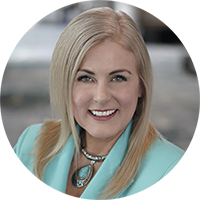How to Build and Scale a Business You Love with Mary Kelly
Manage episode 448646763 series 2928181
If you’re going to build a business, you should love what you do. Once you build a foundation it’s time to scale the business. I discuss how to do that in this episode with my guest, Mary Kelly.
Mary started working for her dad’s business at trade shows when she was just seven years old. Her parents would leave her at their tradeshow booth to write orders while they worked the room to get more business. Mary took a hiatus from the business world for 25 years when she joined the navy and spent 17 of those years in Asia. During that time, she got experience leading teams that were both multi-cultural and multi-lingual. She learned how to manage people, assets, and supply chains.
Transitioning into the Private Sector
During her last tour in the Navy, Mary taught at the naval academy. The admiral was always being called to give talks about the status of the Navy, leadership, and other topics to government institutions and private sector businesses. One day the admiral was busy, and Mary’s friend called her and asked her to give a talk. That led to more talks. At one of those talks the organizer asked her to come back and train their people.
Mary was ready for the opportunity because the premises of what you’re managing doesn’t really change. It doesn’t matter if it’s Navy people or businesspeople. Managing and leading people is still managing and leading people. This is where people get hung up on “How do we lead Gen Z, or millennials, or boomers if they’re older or younger than us?” Mary believes that regardless of the demographic, people need great leadership. You don’t lead demographics, you lead individuals. Lead your people well and the rest will follow suit.
This belief has led to a very successful private sector speaking career for Mary.
The Biggest Lessons Learned
Number one, you must pay attention to your numbers, always pay attention to your numbers. Number two, realize and embrace that your people are your most important assets. You must make sure that people show up every day to serve you, the mission and the vision you’ve got in mind. The third thing is when you see a disruption there’s almost always more to it than what you think. Dig a little bit deeper than you initially want to, look at the surface problem and go “Ok, we’ve solved that, put a band-aid on it, everything is fine, NO. What Mary found is there’s almost always a deeper-rooted problem that needs a solution.
Many leaders are worried about making a mistake or going in the wrong direction, so they do nothing. Sometimes they stagnate or believe a decision they made a year ago is still a good decision today. In that case they’re not taking the current market conditions into consideration. You need to ask yourself what is the situation today and how has it changed since yesterday and how might it change tomorrow.
How to Start Building a Business and Do It Effectively
First you must figure out your vision and your mission. The next question to answer is why are you better at those than somebody else? You can be competitively better (you’re just better) or you can be comparatively better (and have a lower price point, or you’re more convenient, and so on). This means answering: Competitively and comparatively where are you better? Build your value proposition around that.
Then you build out your mission and figure out where you want to go. From there you create the action steps to get you there. When you cross the action steps, this is where Mary believes a lot of people get stuck, you must first say, “What’s going to be the biggest obstacle?” Sometimes, it’s your own friends and family. They’re going to say things like “You can’t start that business.” Those are not the people you don’t want to listen to.
Once you see those obstacles then you brainstorm on the solutions. If you don’t give your brain a place to go with the solutions, it’s going to focus on the obstacles. And you’re going to stop and make excuses like “I don’t have time” and your brain doesn’t come up with solutions.
Instead, ask productive questions such as “Where am I going to find the time?” and “How am I going to find the time?”, “What other resources am I going to need in order to do this?” Then your brain focuses on the solutions and that is a very different place to be.
At that point you’re on your way.
We also dive into topics such as:
- The four components of a great value proposition and how to create one.
- How to be a great communicator.
- How to effectively manage clients and customers.
- How to deal with uncertainty as a leader.
- How to scale a business once you’ve built the foundation.
- When, why, and how you should delegate certain tasks.
- The difference between building a business and building a life.
- How to not just maintain, but scale success once you’re reached it.
- The characteristics of monthly goals you should be setting and achieving.
- The benefits of asking for advice and how to go about it the right way.
- The case for handwriting notes instead of typing them.
- The one thing, above all else, you need to do to build your dream business.
…and other golden nuggets of advice!
You can get my book here: “Idea Climbing: How to Create a Support System for Your Next Big Idea”
Click here for more outstanding interviews with entrepreneurs and thought leaders!
About My Guest
Commander Mary Kelly, US Navy (ret), PhD, CSP, CPAE
Mary focuses on economic and leadership development. Mary helps leaders attract, recruit, retain, mentor, and develop the right people at the right time to get the right results. As a corporate strategist, Mary develops plans for personal and organizational growth.
Mary is a Naval Academy graduate who served 21 years on active duty in intelligence and logistics, mostly in Asia. With a PhD in economics, Mary taught at the Naval Academy, the Air Force Academy, SMU, and in the graduate school for CSU.
Best-selling author of 20 business and leadership books including “The Five-Minute Leadership Guide”, “Who Comes Next? “”Leadership Succession Planning Made Easy”, and “Why Leaders Fail” and “The 7 Prescriptions for Success”.
Mary loves travel, coffee, and dogs.
Connect with Mary!
mary@productiveleaders.com
112 episoade






